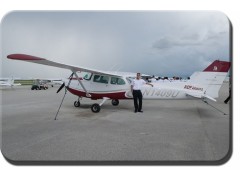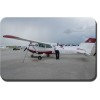To become a Private Pilot, you must
Be at least 16 years of age to solo
Be at least 17 years of age when you take your practical flight test (check ride)
Pass a medical examination
Pass an FAA written examination
Meet the minimum flight time requirements for the license
Pass a practical examination consisting of an oral and flight test.
The Training Program
Instruction is based on a time tested, curriculum-based program which will allow you to learn quickly and effectively. Ground and flight school are interwoven with simulators, books, and videos into a seamless training program that maximizes learning. All training is delivered in a one-on-one setting. Your experienced ADF Flight Instructor will guide you through each stage with patience and a smile. Classes can be arranged to fit your busy schedule. We are available to train 7 days a week, 363 days a year (Christmas and New Years day are the only days we are closed)
Stage 1 – Pre-Solo
In this stage you will learn the basics of the airplane flying, how to communicate with Air Traffic Control (ATC), parts of an airplane and how they work together to get off the ground, basic weather, and flight preparation. When you have completed this stage you are ready to go out and fly by yourself for a while. Everyone who has flown can tell you that they still remember their first solo as a magical experience. It is one of the first true rewards in your path toward the private pilot license.
Stage 2 – Cross Country Flying
Learn about weather systems, meteorology and how it applies to navigation and flight planning. Fly cross country-flights to distant airports using mathematical calculations or radio navigational aids such as VORs, NDBs, and GPS. Upon completion you will fly solo cross-country flights to enhance your abilities as a pilot. You will also be trained in night flying and take written exams to familiarize yourself with the numerous regulations for safe, responsible flight.
Stage 3 – Test Preparation
The final stage in your training will prepare you to take the practical exam. You will review everything you learned in stages 1 and 2, putting everything together in order to have a successful practical examination. once you complete the practical exam, you will be issued a private pilot license. The Private Pilot license is the beginning of a journey, regardless of whether you will continue onto an aviation career or will just fly for fun.
All training is geared toward meeting or exceeding the Federal Aviation Administration (FAA) Practical Test Standard. If you would like to know more about the Practical test standard (PTS), click on the link below which will take you to the document.
Private Pilot PTS
Private Pilot Training Manuevers
wher do I go from here?
For those who simply want to fly under visual flight rules (VFR) for pleasure, a Private Pilot License is perfect. But for those seeking to fly safely under instrument weather conditions (IFR) or for those seeking a commercial certificate and an Airline career, the next logical step is the Instrument rating





